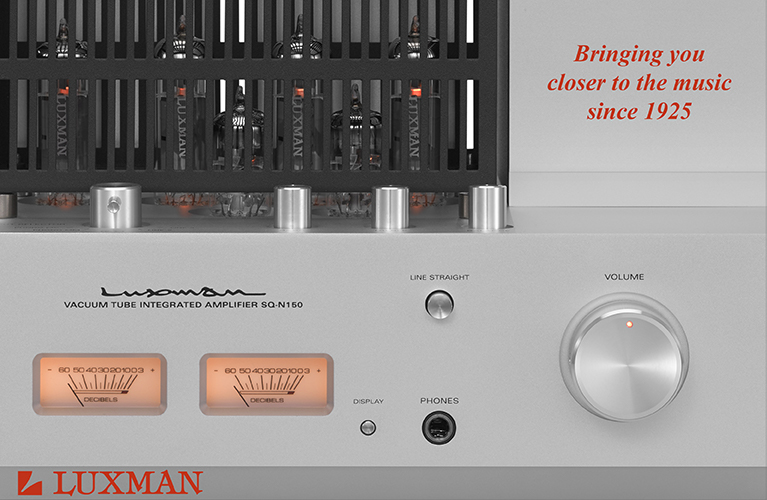 “Fortune favors the bold” is a well-known proverb that could certainly apply to Gryphon Audio Designs, a super-successful Danish hi-fi company known for making bold statements with its products. The industrial design of Gryphon components often makes them look menacing but beautiful; they’re big, well-built, great-sounding, and expensive. The latest example of the company’s bold approach is the Apex Stereo amplifier, which Jeff Fritz reviewed for SoundStage! Ultra in May.
“Fortune favors the bold” is a well-known proverb that could certainly apply to Gryphon Audio Designs, a super-successful Danish hi-fi company known for making bold statements with its products. The industrial design of Gryphon components often makes them look menacing but beautiful; they’re big, well-built, great-sounding, and expensive. The latest example of the company’s bold approach is the Apex Stereo amplifier, which Jeff Fritz reviewed for SoundStage! Ultra in May.
Priced at $99,000 (all prices in USD) and weighing in at about 450 pounds, the Apex Stereo is the largest and most expensive stereo class-A amplifier that the company has ever produced. But if you wanted even more in terms of size and price, you could opt for the Apex Mono, which also operates in pure class-A mode. A pair of Apex Mono amps comprises two cases, each the size of the Apex Stereo—23.4″W × 14.6″H × 34.9″D—and containing just as much circuitry as a single Apex Stereo. As a result, a pair of Apex Monos is twice the size, weight, and price ($198,000) of one Apex Stereo.
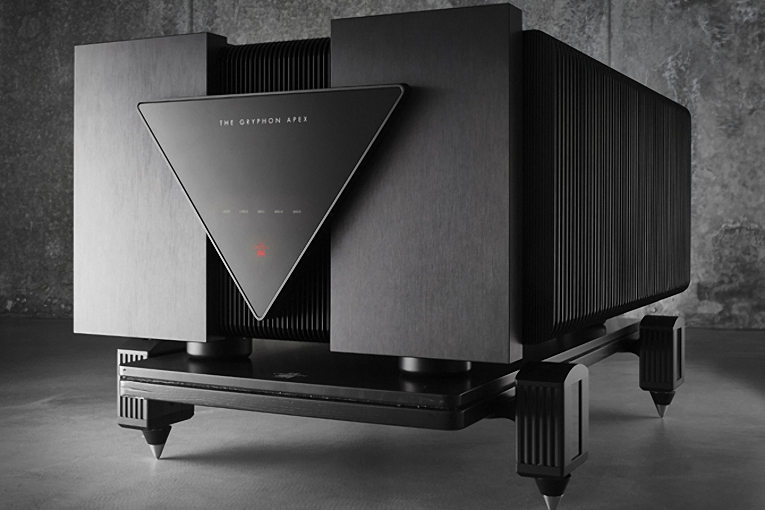
While a pair of Apex Monos is rated to provide an additional 15Wpc into 8 ohms, the Apex Stereo’s 210Wpc will be more than sufficient for most people. Like the Apex Mono, the Apex Stereo is stable down to 1 ohm, where it’s said to be able to output up to 1490Wpc (an Apex Mono can output 1690W into 1 ohm). For his review, Jeff used the Apex Stereo to power a pair of Vivid Audio Giya G1 Spirit loudspeakers—and there was no hint that he’d ever run out of power.
Jeff started his listening with “about an hour of rocking” to Joan Jett & the Blackhearts’ (Changeup, 24-bit/96kHz MQA, Blackheart / Legacy Recordings / Tidal). He wrote: “The Apex drove the Vivids like a big V8 engine drives a muscle car—I could feel the power reserves even as I was speeding down the road. The sensation produced by the Apex was a sound dichotomy: big and easy, yet powerful and intense. I was taken aback, honestly.” Listening to “Bad Reputation,” Jeff noted that “the resonant character of the guitar was easier to sense, providing a more visceral experience” than he’d thought possible with this song. He found that the sound was “rich, meaty, and raw, while at the same time easy to listen to . . . loud.”
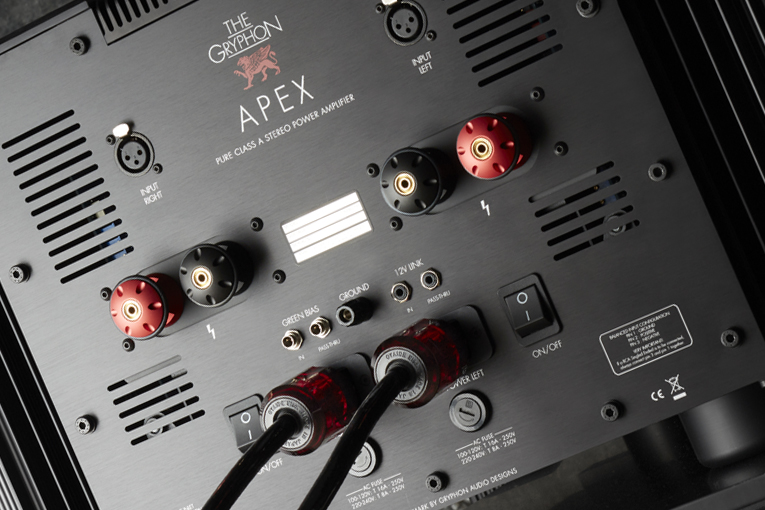
Jeff then played “Tomorrow,” from Esther Abrami’s self-titled album (24/48 MQA, Sony Classical / Tidal), and stated: “The piano that begins the track was weightier and more tonally saturated than I’ve heard it, and the French player’s violin was satisfyingly resonant—that word again—and textured, yet silky smooth and present in my room.”
The word resonant was a recurring theme in Jeff’s review. In the write-up, he pointed out that “the single most defining characteristic of the Apex” during “the entire review period” was the amplifier’s ability “to reveal the resonant nature of instruments, which was particularly noticeable with strings.” To that he added: “I could more clearly discern the attack and decay of stringed instruments—guitars, violins, cellos—and I could feel the notes as well as hear them. This made the experience of listening to music more like attending a live concert.”
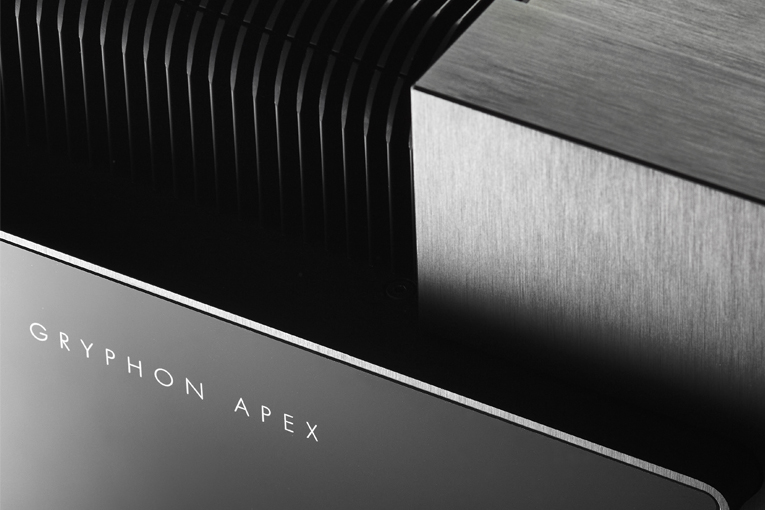
Jeff also listened to Phoebe Bridgers’s 2017 debut release, Stranger in the Alps (16/44.1 FLAC, Dead Oceans / Tidal), to hear how delicate female vocals would sound with the Apex driving the Vivids. The track “Georgia” gave him “a microscopic view into the young singer’s voice. Imaging was precise, the accompanying instruments all distinct, and the effects on the vocals were revealed. Nothing was lost in the reproduction of this pop mix, and there were no ill-fitting parts that made me want to turn the music down. As it turned out, this foreshadowed another aspect of the Apex’s performance that would define my time with it: it sounded perfectly balanced and tonally full at very low listening levels, but uniquely in my experience, it simultaneously encouraged louder listening levels.”
To test the Apex’s power output, Jeff used Bruno Coulais’s music for the film Himalaya (16/44.1 AIFF, Virgin), which he described as his “usual bass torture test.” He pointed out that “the third track, ‘Norbu,’ features a large bass drum that, when reproduced properly, rolls through the room from front to back in a smooth wave of bass power, each whack decaying into the start of the next note.” He penned that the track is a “great test for bass linearity” and “if a system can energize the room and sustain drive in the lowest frequencies without any apparent drop off, it passes the test.” Jeff then declared: “The Gryphon/Vivid combo did just that, and—something I seem to have found over and over with the Apex—there was still a surprise to be heard. As I was paying close attention to the bass, chants that are usually more background than foreground were drawn to my ears. . . . The Apex never failed to find new ways to deliver more than I anticipated.”
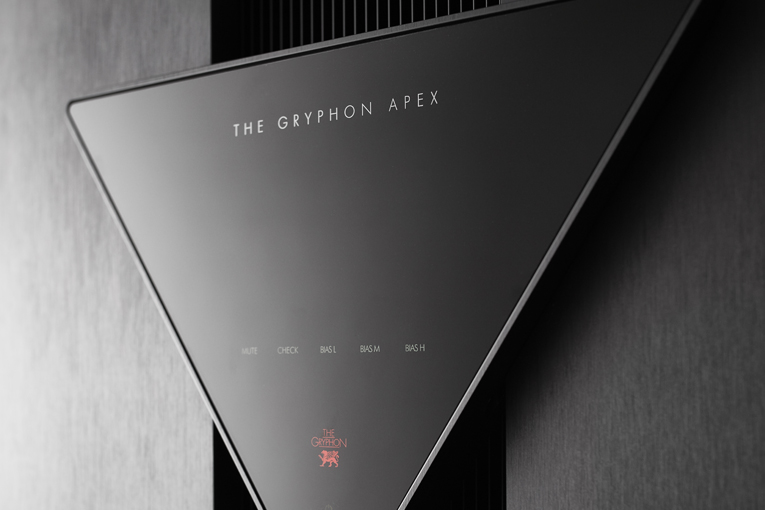
The combination of size, weight, and price of the Apex Stereo means that it can only appeal to a select group of buyers—those who can afford it, but also don’t mind how big it is, how much it weighs, and how much heat its class-A output generates. Certainly, the Apex Stereo requires commitment from its owner—and a pair of Apex Monos more so. But it’s understandable why many would be drawn to this amp. Near the end of his review, Jeff wrote that he “expected greatness” from Gryphon’s latest flagship, but the “magnitude of improvement” over previous models he’s auditioned was “transformative.” Jeff concluded: “The Gryphon Audio Designs Apex Stereo is the most impressive electronic component I’ve yet reviewed.”
Jeff’s praise earned the Apex Stereo a Reviewers’ Choice award when his review was published—and it has earned it a Recommended Reference Component award this month. Gryphon Audio Designs’ bold approach has once again paid off.
Manufacturer contact information:
Gryphon Audio Designs
Industrivej 10B & 10A
8680 Ry, Denmark
Phone: (45) 8689 1200
Fax: (45) 8689 1277
Email: sales@gryphon-audio.dk
Website: www.gryphon-audio.dk






















